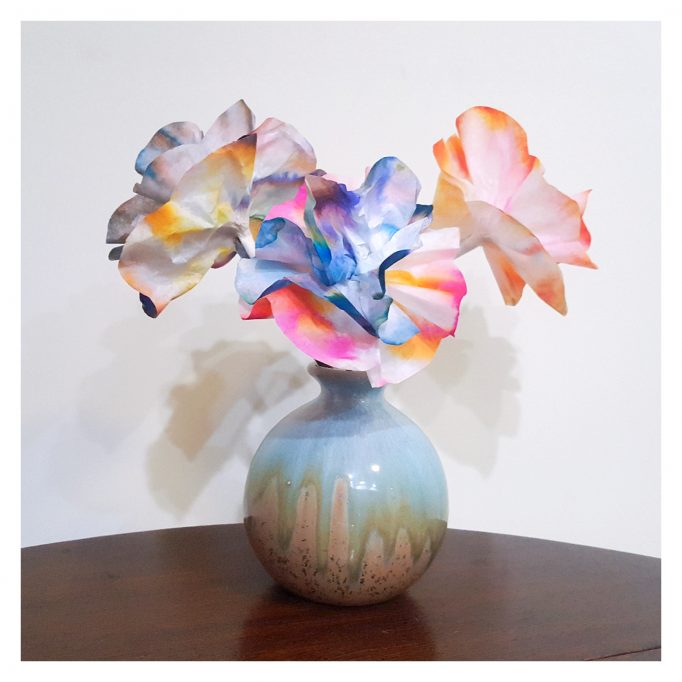STEAM at Home: Coffee Filter Flowers

A fun STEAM project exploring capillary action and chromatography!
WHAT YOU’LL NEED:
- Coffee filters
- Washable markers
- Small cups of water
- Scissors
- Tape
- Sticks
WHAT YOU’LL DO:
- Pick your colored marker (try just black too). Open up a coffee filter and draw a thick circle
around the center of the coffee filter where the ridged part meets the flat center. You can leave it
as just a circle or have your child color more of the filter anywhere ABOVE the circular line (not
in the direct center). - Fold the coffee filter into a cone shape. Get a short glass or cup and fill it a small amount of water. Open up the top of the cone shaped coffee filter so it balances right on the glass with the tip of the cone just touching the water (be sure NOT to let the marker circle go in the water, just the uncolored tip of the coffee filter cone. If you have too much water and it touches the circle, the color will bleed into the water).
- Let it sit and watch what happens as the water begins to flow up the paper. It usually takes about 20 – 30 min total to reach the top.
- When the water reaches the top, lay them out to dry.
- To turn them into flowers, take the dried filters and fold them in half four times. Use scissors to round out the edge. Open it up and bunch them from the center to make a small stem. Use tape to keep the stem together. Find a stick outside or use a popsicle stick to attach as the larger stem. Place in vase and you’ll have a beautiful bouquet!
THE SCIENCE BEHIND IT:
This activity explores capillary action and chromatography. Capillary action is the name of the process when liquids, like water, move up through a solid. This happens because of the forces of cohesion, adhesion, and surface tension. Plants need capillary action to move the water and nutrients they need up into their stalks or trunks. Chromatography, in this case, is how different elements of the ink are carried along at different rates. Most nonpermanent markers use inks that are made of colored pigments and water. On a coffee filter, the water in the ink carries the pigment onto the paper. When the ink dries, the pigment remains on the paper. When you dip the paper in water, the dried pigments dissolve. As the water travels up the paper, it carries the pigments along with it. Different-colored pigments are carried along at different rates; some travel farther and faster than others. How fast each pigment travels depends on the size of the pigment molecule and on how strongly the pigment is attracted to the paper.











